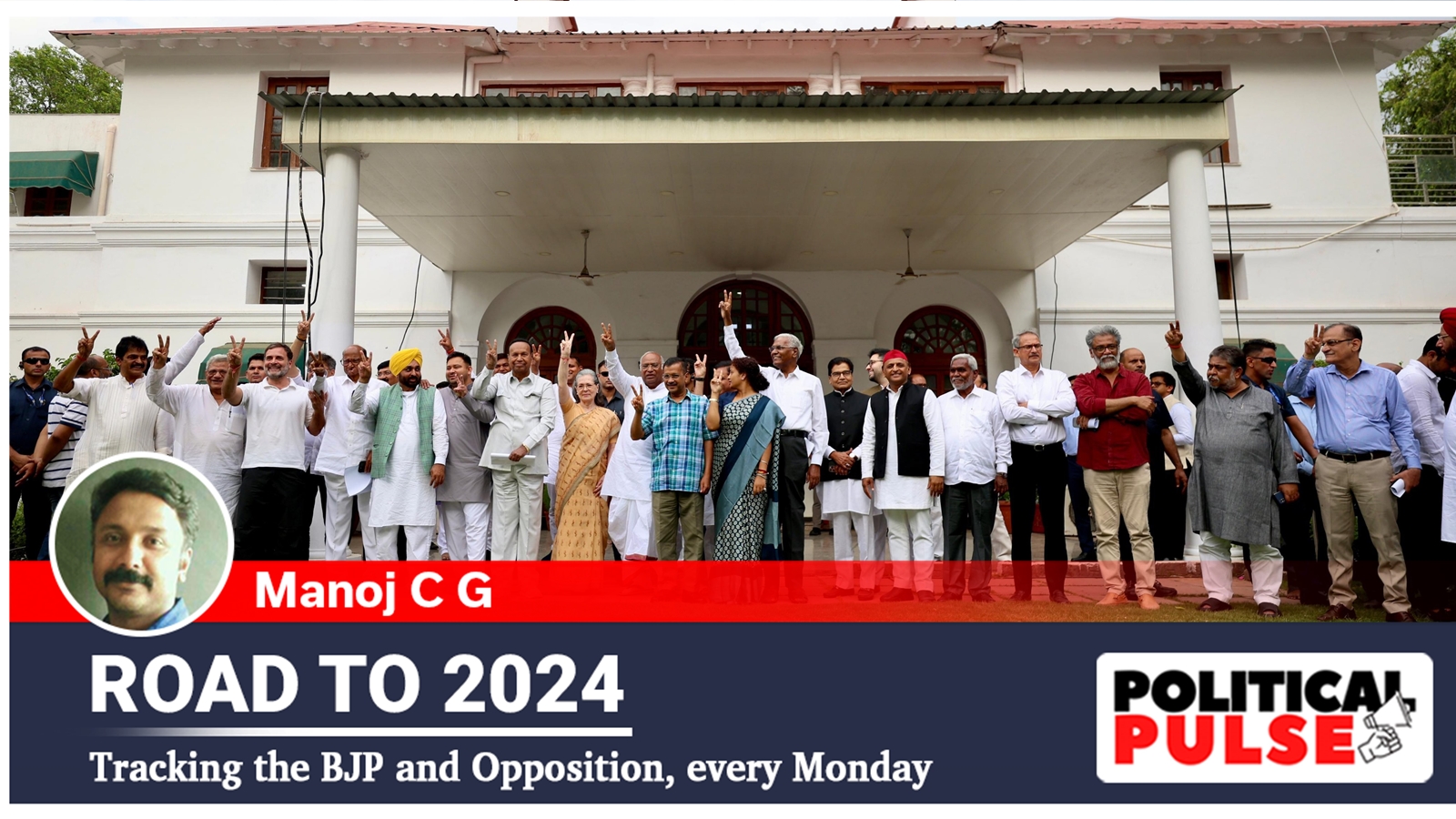Between the figure of 295 Lok Sabha seats now being bandied about by almost every Opposition leader, to the dizzying lows projected by exit polls, lies the real hope and expectation of the INDIA bloc. Despite the bravado, the Opposition realises that stopping the BJP from scoring a hat-trick would be a tough task. What they are looking for are green shoots of recovery in some states, particularly those scheduled to go to Assembly elections later this year and in the near future.
For several INDIA parties, the Lok Sabha elections were the first step to a long road to revival. And their campaign strategies mirrored this strategy.

While Congress leaders claim the party could touch the three-figure mark – the party could win just 44 seats in 2014 and 52 in 2019 – insiders admit it is looking at a more realistic figure between 75 and 80.
Its hopes are majorly riding on some of its allies, but the Congress also believes that bettering the 2014 and 2019 figures would help it shed the image of being a baggage to its allies and the proverbial weak link in tie-ups.
In fact, the Congress contested this time the fewest Lok Sabha seats in its history – 328, as compared to 421 in 2019, 464 in 2019 and 440 in 2009 – with the gambit that even a partial combined recovery could help against the BJP in the coming Assembly elections.

The states where the Congress is hopeful that the INDIA bloc will recover some lost ground include Rajasthan, Haryana, Maharashtra, Bihar and Karnataka. Of these, Haryana and Maharashtra go to Assembly polls later this year and Bihar next year.
Two of the allies which the Congress went out of its way to accommodate, consequently, were the Samajwadi Party (SP) and RJD, which for their part treated the Lok Sabha elections as a key milestone on the road to Assembly elections.
This was one reason that the SP looked beyond its core vote bank of Muslims and Yadavs, and gave tickets to a large number of non-Yadav OBCs, Brahmins and Thakurs. It was also the reason that the SP rebuffed all suggestions by a section of the Congress for an outreach to the BSP.
The BSP was not willing to join the INDIA bloc or enter into a seat-sharing pact with the Congress and SP, but some leaders were of the view that the parties should nevertheless give it a try. The SP was clear; it wanted to emerge as the sole challenger to the BJP in UP.
The RJD employed a similar strategy when it came to candidate selection.
In both the states, the Congress was more than happy to play second fiddle even in terms of leadership. While it can be argued that it didn’t have much of a choice, the party ensured that Tejashwi Yadav led the INDIA bloc campaign in Bihar, and Akhilesh in UP.
In Haryana, the Congress parted with one seat to accommodate the Aam Aadmi Party (AAP), though it has never won an election in the state. In Maharashtra, the Congress sidestepped the state unit’s objections to concede some seats to the NCP faction led by Sharad Pawar and the Shiv Sena group led by Uddhav Thackeray.
In Punjab, in contrast, where the AAP is seen as losing its popularity and feeling the heat of anti-incumbency, it stayed away from aligning with the party.
In Bengal, the story could have gone differently. The Congress central leadership was keen to ally with the Trinamool Congress, but the Left and the Congress’s state unit scuttled any deal with Mamata Banerjee.
However, even here, the Congress high command consciously stayed away from the campaign trail. Congress president Mallikarjun Kharge made a symbolic trip but Rahul and Priyanka Gandhi Vadra skipped the state. Kharge chose to address a campaign rally in Malda and not in Baharampur next door where state Congress president Adhir Ranjan Chowdhury, a bitter critic of Mamata, is in the fray.
Many in the Congress central leadership continue to believe not aligning with the TMC was a tactical mistake – and, if exit polls prove right, a costly one.
However, officially the Congress stand is that the exit poll projections are way off the mark. “We are very hopeful that our results are completely opposite to what the exit polls are showing,” Sonia Gandhi said on Monday.
Even if the party fails to dislodge the government from power, the Congress is taking heart from the fact that its campaign was much more focused this time than 2019, when Rahul’s direct attacks on PM Modi – particularly the slogan ‘Chowkidar chor hai’ – backfired. This time, Rahul refrained from targeting the PM even as he continuously attacked the Modi government.
Many Congress leaders said that the aggressive campaign could be a template for future elections. “Unlike in 2014 and 2019, Mr Narendra Modi failed to set the narrative of the election. The Congress… manifesto became the talking point of the election campaign,” said senior leader P Chidambaram, the head of the party’s manifesto drafting committee.

